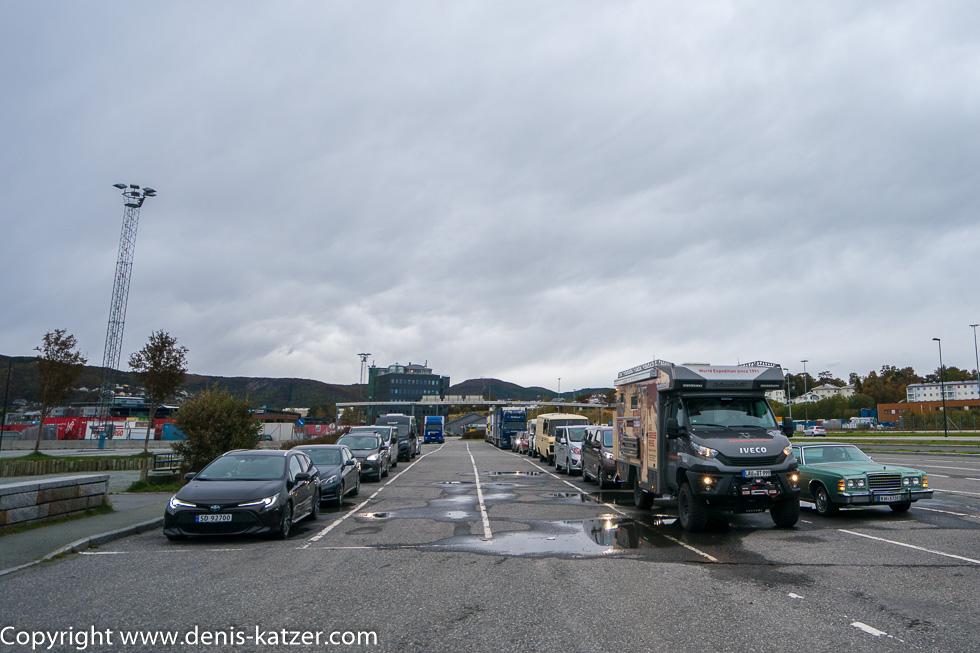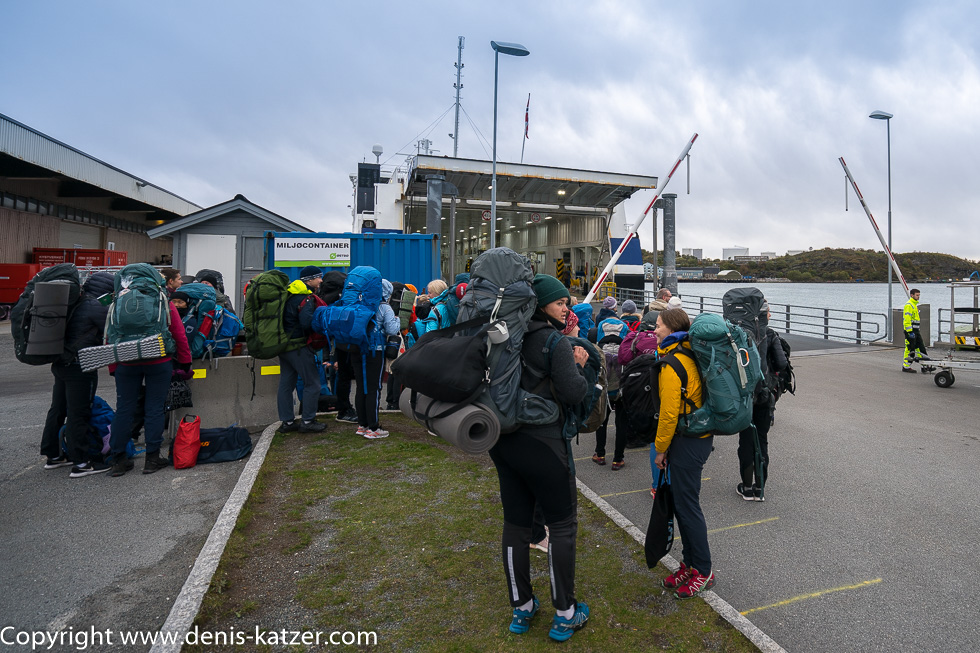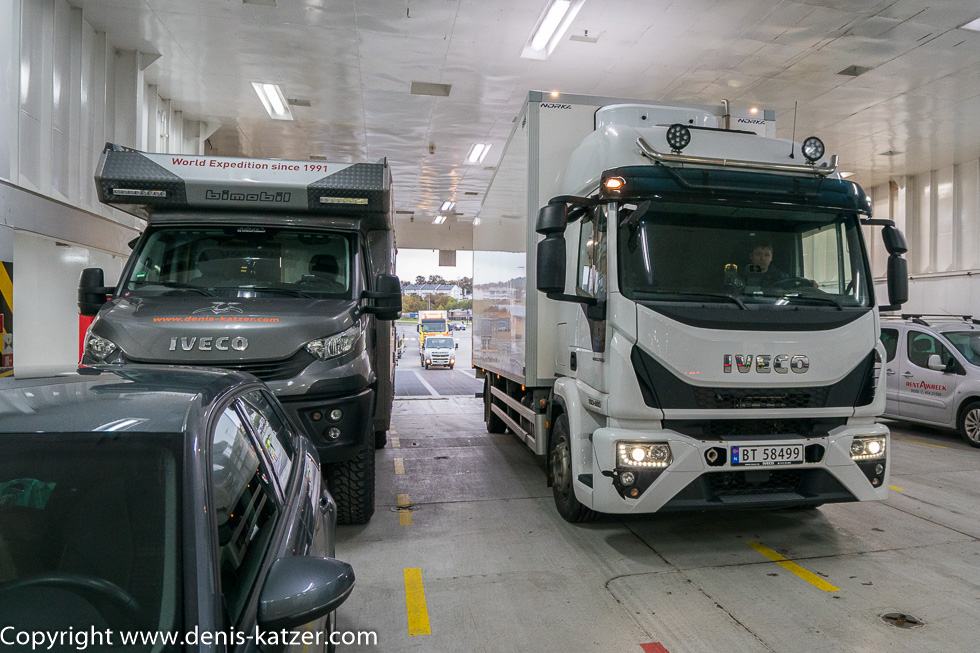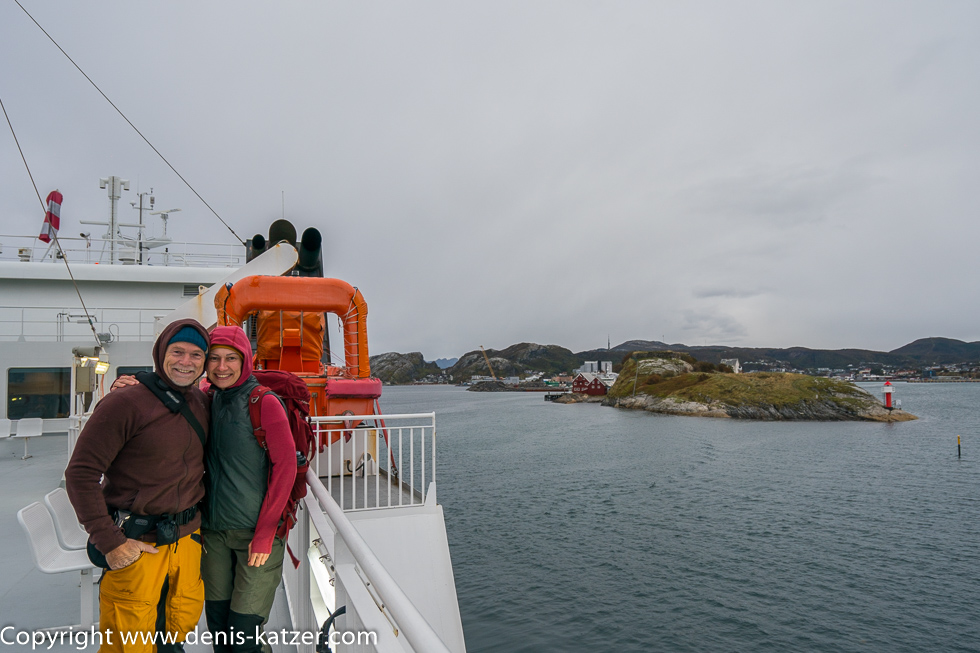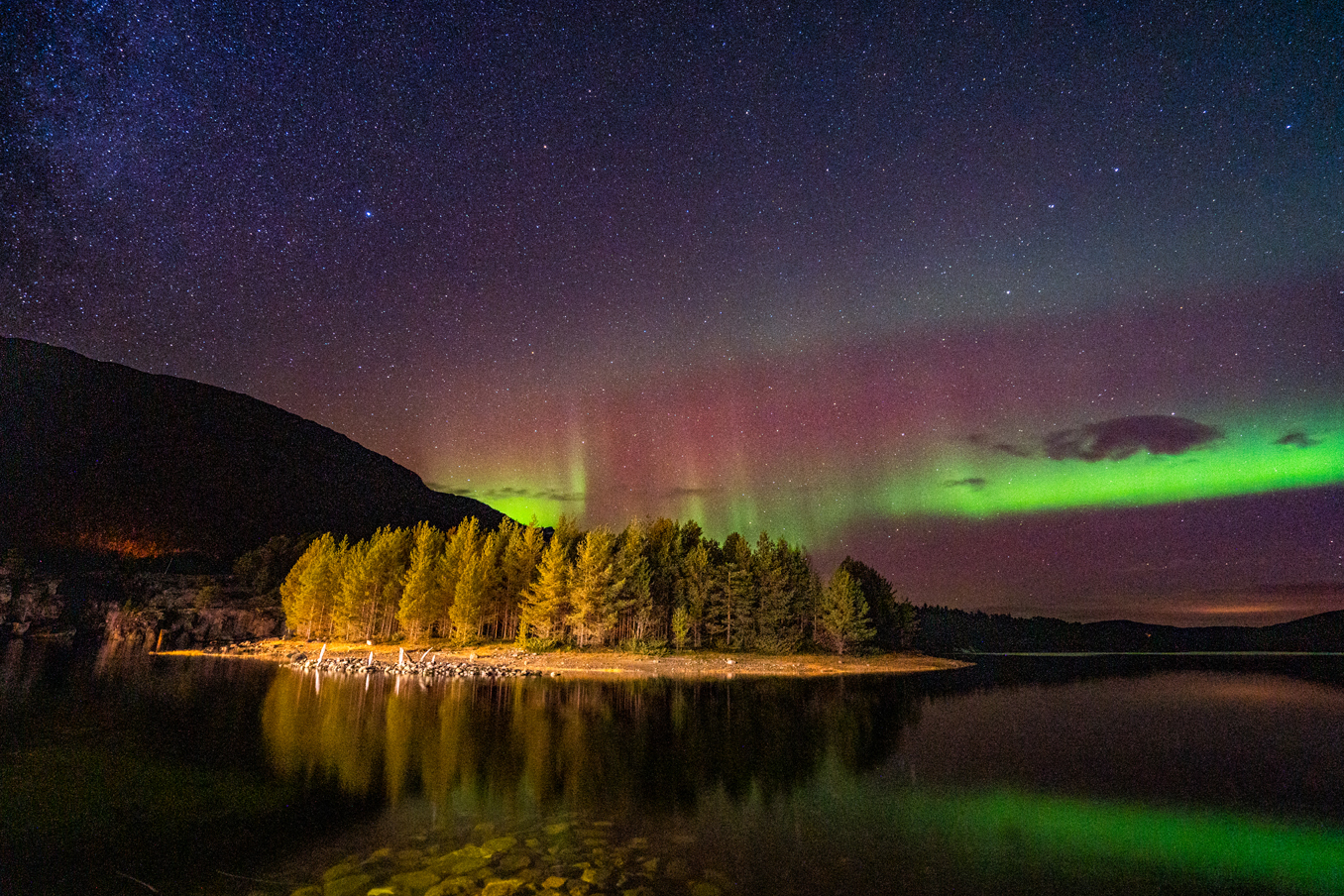
Ferry crossing – Tourism in Norway
N 67°52'47.9'' E 012°58'40.9''
Date:
24.09.2020 to 25.09.2020
Day: 053 – 054
Country:
Norway
Location:
Å i Lofoten
Daily kilometers:
12 km
Total kilometers:
5003 km
Soil condition:
Asphalt
Ferry
1
Bridge crossings:
0
Tunnel passages:
1
Sunrise:
06:49 h to 06:53 h
Sunset:
7:11 pm to 7:07 pm
Temperature day max:
8°
Night temperature min:
5°
Gusts of wind
100 km/h
Departure:
16:45
Arrival time:
19:50
(Photos of the diary entry can be found at the end of the text).
Click here for the podcasts!
Link to the current itinerary
(For more posts click on one of the flags in the map)
As if it was all just a spook, the storm with its nasty gusts has passed. “Everything’s calm,” I say, lying in our cozy bed and looking forward to the new day. “The squalls somehow rocked me to sleep,” says Tanja. “It’s a good thing they didn’t swing us over,” I reply, amused. “Do we want to stay here until this afternoon or go straight to the port and wait for the ferry?” asks Tanja. “It doesn’t really matter where we wait. It’s certainly quieter here than in the sober harbor area. On the other hand, we haven’t bought a ticket and as the ferry didn’t sail yesterday because of the storm, it could be fully booked today,” I think. “In that case, it makes sense to get there early,” says Tanja. “Well, let’s set off then,” I decide. On the way to the harbor, we look for free WLAN at a petrol station. Unfortunately without success. “Let’s look for a WLAN at one of the fast food restaurants in Bodø,” Tanja suggests. Once there, we end up in the basement of a building in a lightless fast food restaurant. “Sorry, we don’t have Wi-Fi,” apologizes the restaurant manager. There is a technical problem in another restaurant. “Well, then we can’t upload our current podcast,” says Tanja disappointedly. “Being dependent on this stupid internet is really annoying,” I reply, steering the Terra towards the harbor. The large square where the trucks, cars and motorcycles normally line up to get onto the ferry is still completely empty. I use the waiting time to write this text while Tanja knits her woolen cardigan. Around midday, more and more vehicles arrive at the site and join the increasingly long queues. From time to time, my gaze glides from the screen of my laptop to the outside world. Young backpackers stand a few meters away from us. At around 7 degrees, some of them jump up and down to warm themselves, others start dancing exuberantly, while some unpack their small gas stove and heat up a ready-made soup. At 4:15 p.m. the waiting crowd starts to move. Drivers get into their cars, the travelers have packed their stoves, shouldered their rucksacks and walk to the landing stage. An employee of the ferry company comes by, takes a picture of our license plate and asks for the length of the vehicle. We don’t have to pay anything. “The invoice will be sent to you,” says the man. “Do you actually know how much the crossing costs?” I ask Tanja. “No, I asked yesterday, but nobody knew how much it would cost. In the office, they said that everything had been switched to digital recording because of corona and that the invoice would be sent to them.” “How times change. Corona is a real accelerator in the digital age. People are being laid off, cameras are doing the recording, computers are sending invoices and if anything goes wrong, you’re very likely to be in a bad position.” “What do you mean?” asks Tanja. “Well, who should we turn to if they enter our Terra with the wrong vehicle length or if they enter the data of another vehicle? I think it can easily happen that mistakes are made and the crossing becomes twice as expensive. That makes for unpleasant paperwork and computers don’t make mistakes unless they have a glitch.” “Don’t be so pessimistic. Everything will work out fine.” “I’m not pessimistic, I’m skeptical about all this AI (artificial intelligence) stuff. But what the heck, times are changing rapidly. Either you move with the times or the system and society spit you out. I, on the other hand, don’t want to be spit out, I want to adapt to the digital flow. It’s the only way to maintain at least a small influence and certainly the only way to have a say,” I say as a few cars and trucks around us start their engines. Although we are in the front row, all the cars are waved past us. “Trucks are probably only allowed on the ferry at the end,” I assume. When all the cars behind and beside us have disappeared into the hold of the ferry, one of the guides waves to us. Finally, the Terra Love is allowed to roll over the loading ramp into the belly of the ship. Due to the autumn storms, the trucks are additionally lashed to the ferry’s steel floor plates with strong straps. “You can only hope that all the drivers have put the handbrake on,” I say, getting out of the Terra. “Have you seen what’s written on the little red car in front of us?” asks Tanja. “Fiat Panda 4×4”, I read on the tailgate of the aged little thing. It is loaded to the roof with outdoor equipment and because that is not enough for the young Italian couple, they have added a huge roof rack to their vehicle, which is also piled high with cargo. “No, I mean the black stickers,” says Tanja. “Save the panda? Ha, ha, funny,” I laugh. “No, the sticker next to it.” “NO AIRBAGS – WE DIE LIKE REAL MAN”, I read and this time I can’t stop laughing. “Too funny,” I say, and when we meet the Italians on deck later, I stick my thumb up in the air. “You really have a great car,” I say. “You too,” they reply with a laugh.
The modern ferry departs punctually at 16:45. We are joined by another three motorhomes and two cars from Germany. The other guests, including the travelers, are Norwegian. In 2019, before Corona, cruise ships alone disgorged 6.3 million passengers at 2135 ports in Norway. Norwegian airports have counted 40 million arriving and departing passengers. In 2019, 35.2 million people stayed overnight in accommodation establishments in relation to a population of just 5.433 million – a huge number. In 2018, the turnover from tourism was around 6 billion euros and now the country is almost empty except for a few travelers who have crossed the borders despite Corona.
Although a cold wind is blowing around our ears on the upper deck, we stand there to watch the harbor exit. The town of Bodø, which lies at the far end of a peninsula jutting out into the Vestfjord, is slowly getting smaller. As the ferry plows through the growing waves to the right in a north-westerly direction, the town disappears behind a tongue of rock. Fierce winds and drizzle drive us below deck. We sit down by the window on one of the free cushioned benches and look out over the sea. Heavy rain is now lashing against the windows. The waves are still considerably high due to yesterday’s storm, but the ship seems to have good stabilizers, at least it doesn’t rock too badly. Corona safety instructions echo through the on-board loudspeakers. The atmosphere on board is good. People are getting bockwurst and chips from the canteen, others are scrolling up and down on their smartphones while Tanja knits, and I’m trying to get a good night’s sleep.
After 3 ½ hours, we reach the village of Moskenes at the south-western end of the Lofoten archipelago. It is already pitch dark. The ferry disgorges its passengers and vehicles. Since we’ve already been to Lofoten last year, we know exactly where we want to go. “Do you remember how far it is to the village of Å?” asks Tanja. “No more than 5 or 10 kilometers,” I remember, steering the Terra over the rainy, windswept, very narrow road. After about five kilometers, the poorly lit black of a short tunnel sucks us in, then we reach the parking lot again, which is also the drivable end of the Lofoten archipelago. “Look at this. There are only two vehicles here,” I say, as we were lucky to get a slot for the Terra at 5:00 a.m. last year. I look intently at the reversing camera to park the rear of the Terra between two windswept trees. As soon as we stand up, the branches scrape the cabin with unpleasant noises on the left and right. “I’ll park again,” I decide. “Should I get out and admit you?” asks Tanja. “Yes, please.” With even stronger gusts of wind, as we experienced yesterday in Bodø, we stand with the other two like lost flotsam at the end of the world and hope that the gusts of wind don’t increase. “According to the weather app, gusts of 100 km/h are sweeping over us,” I say, glancing at my smartphone. “Is that dangerous for us?” asks Tanja, slightly nervously. “As long as no branches or boards are flying around, it’s not a problem.” “And how do we know that nothing is flying around?” “Because we’re in a tidy parking lot. There’s nothing lying around,” I reassure Tanja. Like every evening, Tanja prepares dinner for us while I type the day’s log data and short recordings into the laptop…
